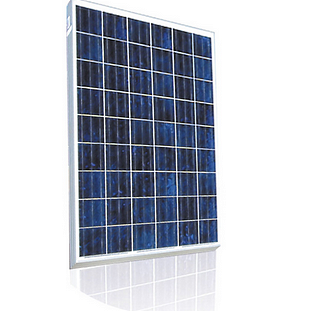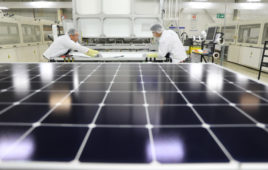Polycrystalline silicon (polysilicon) is the material used to manufacture crystalline silicon PV modules and consists of small silicon crystals that convert sunlight into electricity. Panels made with polycrystalline cells tend to be slightly less expensive and less efficient than monocrystalline because the cells are grown in a large block of many crystals instead of individually. The crystals give polycrystalline a mosaic or shattered-glass appearance. Like monocrystalline cells, the block of silicon is sliced into wafers to produce the individual cells that make up the solar panel.
Although polycrystalline silicon is less efficient, it is much simpler to produce than monocrystalline and so less expensive. Its durability and longevity is comparable to monocrystalline module. Polycrystalline has pros and cons but it’s an inexpensive way to put together a solar photovoltaic system and could make solar power available for those who can’t afford monocrystalline cells.
According to SEIA’s U.S. Solar Energy Trade Assessment 2011, polysilicon is the nation’s largest solar energy export with $2.5 billion in 2010. The U.S. exported far more polysilicon ($2,550 million) than it imported in ($179 million), mainly because of a strong domestic polysilicon manufacturing base and the nearabsence of domestic wafer producers. So although the U.S. produces large quantities of polysilicon, little is consumed domestically. Therefore, it makes sense that the nation’s largest solar energy import product is PV solar modules, of which the U.S. imported $2.4 billion in 2010.
Due to an increase in manufacturing capacity the price of polycrystalline has been falling since 2009. Though in the first half of 2011 polysilicon prices remained strong due to Italian Feed-In-Tariff policies of Italy, prices have again decreased from lack of installation.






Tell Us What You Think!